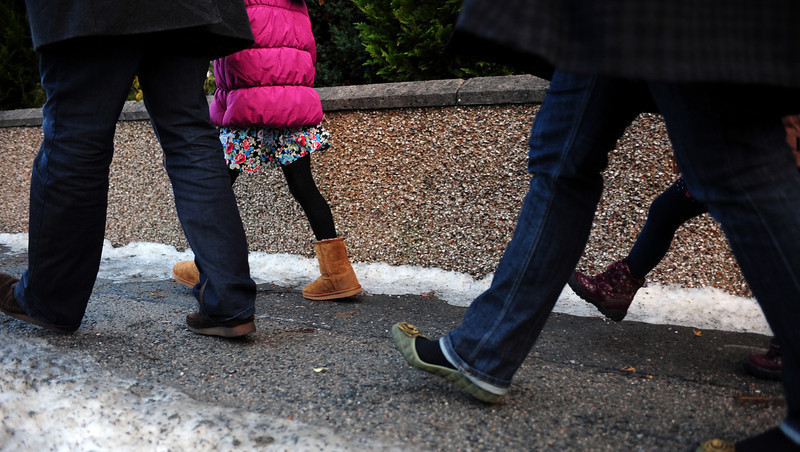It’s easy for me to talk about how much and how often your family should be getting active – it’s my job and it’s my passion. But it also has huge benefits for our health and wellbeing, and I love to shout about it!
But the reality is, not everyone is as keen on fitness as I am. And it’s entirely understandable that lots of families will struggle to fit fitness in when there is so much other life stuff going on.
The argument for…
Exercise is extremely important to keep us fit and healthy as we age. However, this doesn’t mean you have to sign up for a weekly bootcamp or take your kids kicking and screaming to tennis or karate lessons they hate.
There are plenty of ways to ensure that your family gets the right amount of exercise without spending every evening at a sports practice. I can’t stress it enough, but every little bit really does counts.
If your family’s hobbies revolve around football or swimming, then that’s great. But, if your kids prefer to spend their time playing on a games console or going to something like lego club or music lessons, there are still plenty of ways you can make sure you’re all staying active enough.
Little and often
Government guidelines say children should be getting at least an hour of activity a day, with adults getting at least 30 minutes.
But exercise doesn’t have to come in hour-long sports sessions – every movement counts, no matter how big or small. Being active for just 10 minutes will make you healthier and happier. You’ll sleep better, have more energy and feel more positive. Moving more will also help protect against conditions/illnesses such as depression, stroke, cancer and diabetes.
Anything that gets your heart beating a little faster, raises your temperature or makes you breathe a little faster is classed as moderate exercise and will benefit your family’s health.
A brisk walk to school, having a mad dance round the living room or getting off the bus a stop earlier are all great ways to get these benefits.
Rethink your default
With cars, buses, lifts and escalators around every corner, most modern-day amenities are designed for our convenience.
And with so much to do and so little time, it’s common to get into the habit of always choosing the most convenient option without thinking about it.
But rethinking your default position is likely to be enough to introduce some significant activity into your day. Could you walk or cycle rather than take the bus? What about taking the stairs instead of the lift? How about ditching the supermarket trolley and carrying a basket instead?
You may think your week has been non-stop, but if you look back at the times you’ve relied on the car or bus you may find there was the odd occasion you could have chosen a more active way.
If you’re not in a rush, why not take the slow route to work and wander slowly through the park? Or scoot the journey home from school? Even if it’s just once a week, it’ll all count!
Once you are out of the habit of taking the easy option, you will find it second nature for both you and the kids to make a healthier choice.
Mix it up
Three times a week anyone aged six and above should also work in some strength and balance exercises. Not only do these help children develop properly, they help us stay steady on our feet as we age. Strength exercises also help keep aging bones strong and reduce the risk of osteoporosis.
While dancing, tennis, football and gymnastics will easily tick these boxes – there are alternatives for those who don’t have the time or inclination for these activities.
Tree climbing and playing on climbing frames are both great fun and easily incorporated into your walk home from school or a visit to the park. Trampolining and games such as wheelbarrows or assault courses can easily be played in the back garden.
For those of us who have grown out of climbing trees, calf raises, leg lifts, bicep curls (using tins of beans!) and wall push ups will all help – and good news, these can all be done for free at home.
Exercise your break
Sitting for long periods of time slows your metabolism, which affects the body’s ability to regulate blood sugar, blood pressure and break down fat.
If your child is an avid gamer, or you work at a desk for hours on end, it’s wise to try and offset some of this sedentary activity with short activity breaks of 10-20 minutes. A lunchbreak walk can work wonders for your daily movement target.
Why not use screens as a reward for meeting your daily activity target? Or fit a bit more movement into your home routine? Dancing as you’re washing up and putting away, getting some strength exercises in during the ad break or seeing who can put all the toys away in the garden fastest are all great examples of fitting activity into a busy day.
Gyms and Lycra aren’t for everyone. Some of us simply don’t enjoy it, some might not feel confident and others might not have the time.
But by thinking what moving more looks like, not taking the most convenient option and finding small pockets of time in the day, we can help our families, and ourselves, become more active, fitter, happier and healthier.

